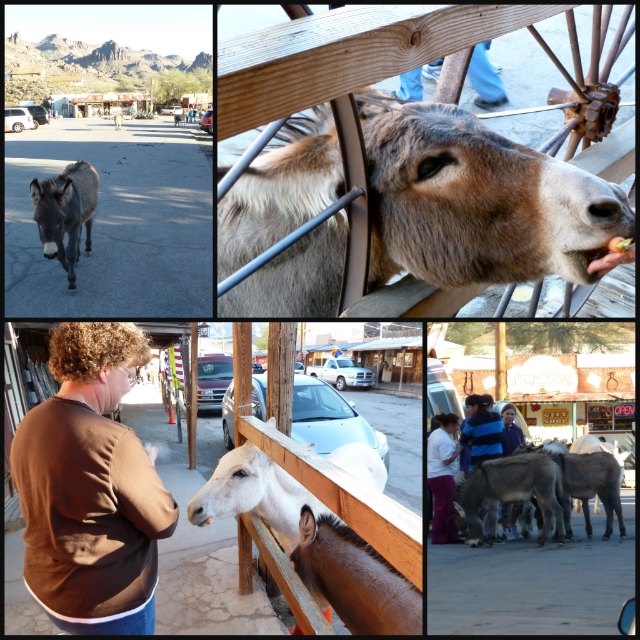Arizona has an abundance of burros. The animals, that is, not the food... well, maybe the food, too, but that's a blog post for another day.
But it wasn't always that way.
Burros, also called donkeys if you live east of the Mississippi River, are not native to Arizona. They were introduced into North America by Spanish colonists. During the mining boon in the 1860's, prospectors brought them to Arizona. After the mining bust, the donkeys were either abandoned or released into the wild where their populations grew, mostly because they have no natural predators in Arizona.
The old mining town of Oatman is home to a herd of wild burros who roam the streets and beg for treats (carrots) from the tourists.
Coincidentally, camels (also not native animals) were introduced into the state at about the same time when Secretary of State Jefferson Davis imported the camels to solve military transportation woes before the railroad came to Arizona. The camels were able to carry heavier loads than mules (which are native and also different from burros/donkeys - they are the offspring from a donkey and a horse) and could survive on the little vegetation in the area. However, the Civil War brought an end to the U.S. government's camel venture and the camels were released into the wild. No one knows exactly how long they survived but there are no wild camels in Arizona today.
But back to the burro problem.
The burro population has grown every year and the Bureau of Land Management (BLM) now estimates Arizona has over 5000 wild burros, more than three times what the government can manage. Burros are protected by the Wild Free-Roaming Horses and Burros Act of 1971 which says the animals can be gathered or removed from an area but prohibits them from being killed.
For decades, the BLM has arranged "burro adoptions" and turned over thousands of wild burros to owners across the country. But burro adoptions are down and the population is increasing. This means more burros are placed in holding pens run by the BLM which are already over-crowded.
The burros aren't aggressive so what is the problem with letting them roam? They cause motor vehicle accidents posing a public-safety concern and compete for food with native bighorn sheep and livestock, affecting Arizona's agricultural industry.
This summer, federal officials, animal advocacy groups, the U.S. Department of Agriculture, and others met in Washington, D.C. met to discuss land management including ways to reduce the burro population. They came up with three means to manage the burro population: temporary fertility vaccines (burro birth control)/permanent sterilization (can you imagine how much that would cost based on human birth control costs?), selling them to anyone, including "kill buyers" who would sell the burros for meat, and more aggressively promoting adoptions. The animal advocacy groups don't like the first two options so that leaves door number three - promoting burro adoptions.
Adoption applications are available through the BLM website and at their holding pens. The minimum adoption fee for each wild burro is $125; jennies (burro mommies) with an unweaned foal are $250. There is considerable paperwork and red tape to "ensure the animals go to good homes that can properly accommodate them" and many people don't want to jump through hoops just to adopt a burro. Economic factors also play into steadily declining burro adoptions.
In the meantime, the burro population is constantly growing.
I wonder what the long-term consequences of my generation's "quick fixes" will be. Creating artificial sweeteners to curb obesity rather than promoting portion control and exercise, for example. Or lowering educational standards because parents and kids are too busy to do homework or read daily.
They seem like such innocuous things at first - or so we think.


